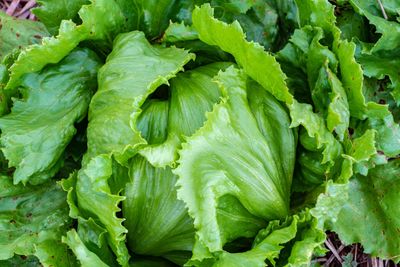Salinas Lettuce Information
California’s Salinas valley is the foremost lettuce-growing region in the world. One of the area’s most popular types of lettuce, Salinas iceberg lettuce is grown across the United States and much of the world, including Australia and Sweden.
How to Grow Salinas Lettuce
Plant Salinas lettuce as soon as the soil can be worked in spring. Plant a fall crop, if desired, in June or July. You can also plant Salinas lettuce indoors three to six weeks ahead of time. Growing Salinas lettuce requires full sunlight or partial shade. Lettuce prefers fertile, well-drained soil and benefits from the addition of compost or well-rotted manure. Plant Salinas lettuce seeds directly in the garden, then cover them with a very thin layer of soil. For full-size heads, plant seeds at a rate of about six seeds per inch (2.5 cm.), in rows 12 to 18 inches apart (31-46 cm.). Thin the lettuce to 12 inches (31 cm.) when the plants are about 2 inches tall (5 cm.). Overcrowding can result in bitter lettuce.
More Tips on Growing Salinas Lettuce
Apply a layer of organic mulch, such as dry grass clippings or straw, to keep the soil cool and moist. Mulch will also suppress growth of weeds. Water lettuce at soil level in the mornings so the leaves have time to dry before evening. Keep the soil consistently moist but not drenched, especially important during warm, dry weather. Apply a balanced, general-purpose fertilizer, either granular or water-soluble, as soon as the plants are a couple of inches (2.5 cm.) tall. Water well immediately after fertilizing. Check the lettuce regularly for slugs and aphids. Weed the area regularly as weeds draw nutrients and moisture from the roots. Salinas lettuce matures approximately 70 to 90 days after planting. Keep in mind that full heads take longer to develop, especially when the weather is cool. Pick the outer leaves and you can continue to harvest lettuce as it grows. Otherwise, cut the entire head just above the soil.
